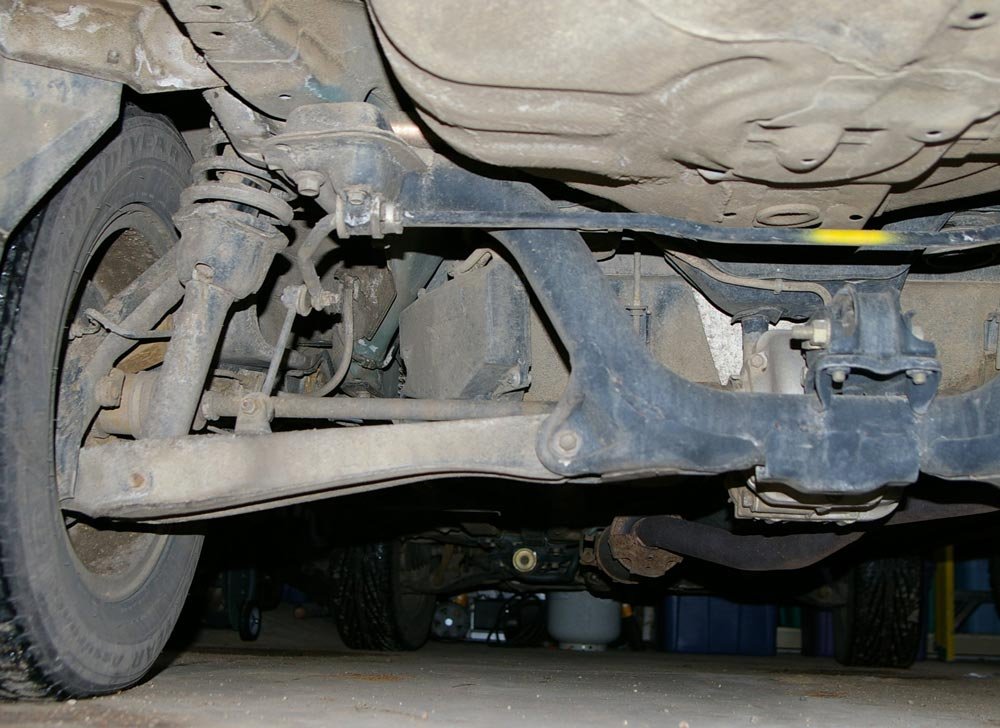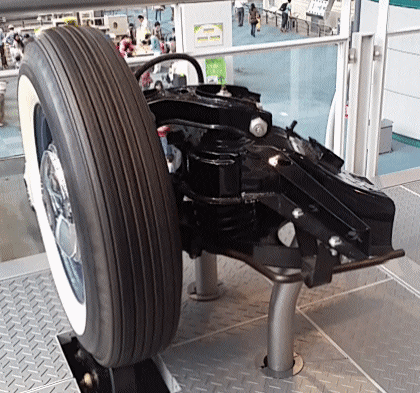De-Mystified: How Do Car Suspension Systems Work?
It might seem to you that your vehicle’s suspension system only performs a singular task and that is to make your road drive smoother and hassle-free. But, it should be noted that there’s more to it than just that because a vehicle’s suspension has multiple functions to complete.
To ensure that you obtain an updated knowledge of your car’s suspension system, in this article we will be discussing an in-depth working analysis of a vehicular suspension system – with the help of car parts.
The Definition Of A Suspension
A vehicle suspension is defined by a part of an automobile that helps in negating force that the car receives from driving on the roads. It ensures that the cabin of the car remains still with very minimal shaking or disturbance. Be it small rocks on the road or just potholes – a suspension can deal with them all.
The Main Job Of A Suspension
The primary task of the vehicle suspension system is to provide the maximum amount of comfortability to the passengers seating inside the vehicle cabin. The suspension also ensures that the wheels of the vehicle stay in contact with the road and the driver can be able to control all of the wheels/tires easily.
Types Of Suspension

Independent Suspension System
Independent suspension systems are those where each wheel has its separate spring & shock absorber system. The modern cars come with either one of the following three types of independent suspension systems:
- Macpherson Strut
- Multi-Link Suspension
- Double Wishbone System
Non-Independent Suspension System
It’s a type of suspension system where the left and right wheels will be sharing a singular, solid axle. This is pretty common in rear-wheel suspension systems and also the suspension system in trucks.
However, one of the major problems that non-independent suspension systems face is that – if the vehicle hits a bump, the whole body of the car faces the force. Moreover, the system is not so great in preventing body roll when taking sharp turns.
The Different Parts Of A Suspension System And Their Functions
Springs
When it comes to suspension springs, there are mainly three types – leaf springs, coil springs and torsion bars. Most vehicles these days come with coil springs while the older cars along with four-wheelers feature leaf springs. These leaf springs are multiple layers of metal that are connected to the wheel axle and thereby flexes under the weight of the car.
Shock Absorbers
Shock absorbers, otherwise known as dampers, protect the chassis of the car or vehicle from the force that is created when the vehicle hits a bump or pothole. A damper can be defined as a piston that is filled with oil, which helps in separating the chassis from the wheel.
They also prevent the springs from continually bouncing around while pushing the wheel back onto the road surface.
Struts
Similar to the shock absorber, the strut helps in dampening the external impacts faced by the vehicle. Apart from dampening impacts, struts also provide support for the car suspension system. Such a difference is what differentiates it from the shock absorbers. It should be perceived that shock absorbers don’t give any amount of structural support. All in all, both the shock absorbers and struts are vital for the functioning of a car’s suspension system.
Anti-Sway Bars
Otherwise known as anti-roll bars, these are metal rods that join the suspension sides together. They tend to run along the axle and thereby provide stability to the suspension system. For instance, if one wheel’s suspension is moving, then the job of the anti-sway bars is to transfer that movement to the other wheel as well. The final result is a perfectly levelled drive.
The anti-sway bars also combat roll, especially when cornering with the vehicle. It’s a standard component in any car of today.
Tires/Wheels
It should be realised that the wheels or tires form the external component of the suspension system. The tires of a vehicle are very crucial because it’s only the part that connects the vehicle to the road and allows the vehicle to move around.
Every time the vehicle will go over any pothole or bump, the tires will be incurring most of the impact. Moreover, cornering, braking and acceleration also tend to have a significant effect on your car tires as well. In case your tires don’t have adequate tread or are leaking, then it can affect the smoothness of your driving on the road.
Linkages Or Rods
In a suspension system, there are said to be several rods that link different components of the suspension system together. These links are said to be metal linkages, which are highly strong & durable – enough to last the vehicle’s entire lifetime.
The only time when such a linkage rod fails is when your vehicle goes through an accident, and therefore it suffers damage.
Bearings Or Joints
These components help in keeping the overall number of linkages or rods together along with the bigger parts. Apart from that, bushings and bearings also enable twisting and sliding actions. As a result, you don’t need to apply lubrication very often as well.
However, it should be perceived that these suspension bushings can quickly wear out if they are made out of rubber. The joints may also get loose over time. Times like these are when you’ll need to call the mechanic because most probably you’ll be facing problems in your vehicle’s suspension system.
Steering System
While the steering system may not be a directly related component to the vehicle’s suspension system, yet both of them work rigorously together to make the car wheels turn. You must learn that the vehicle’s steering system directly controls the tie rods, linkages, wheels, joints along with other components.
When you use your car’s steering wheel, it changes the direction of your vehicle’s wheels so that they can be kept in-sync with the rotational movements of the car.
Frame
This is said to be one of the most significant components of the vehicle’s suspension system. It’s mainly the overall structural skeleton which helps in carrying the load and weight of the entire vehicle along with the added components. The frame also supports the engine and body of the car.
These where the car parts used in vehicle suspension, that make up the entire vehicle suspension.

Conclusion
A car suspension system is one of the most crucial components that are responsible for your car’s stability. It minimises cabin noise by absorbing shocks from potholes and speed bumps and inspires confidence around twists and bends. Knowing about your car suspension system will help you identify and understand the problem better as your mechanic tries to explain it to you. So that you can get it fixed before the damage gets worse. Hopefully, this information was useful.





